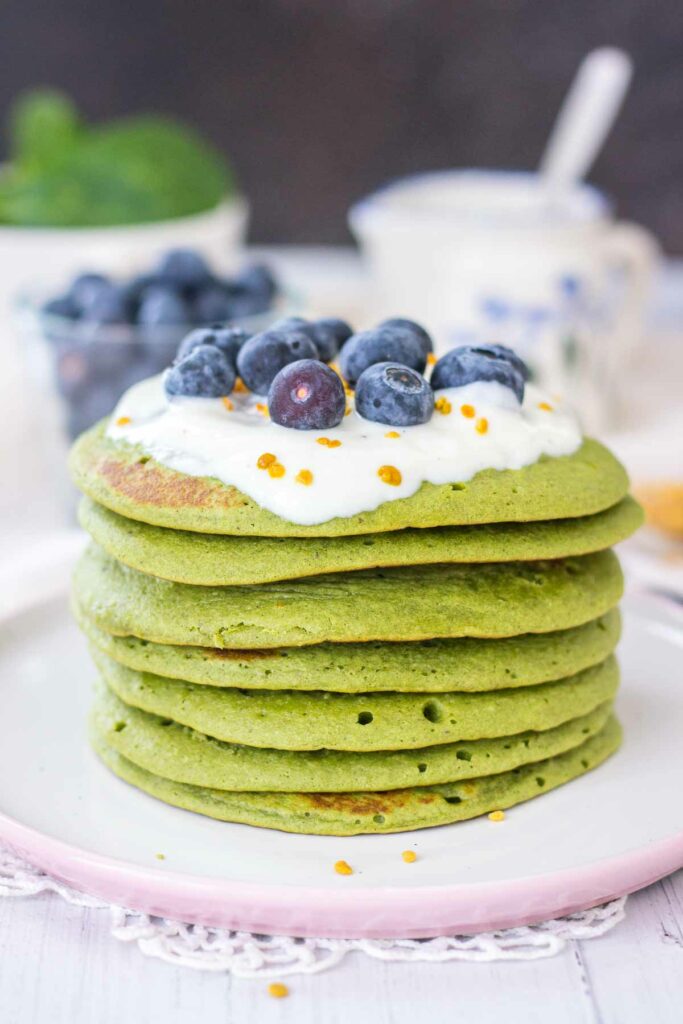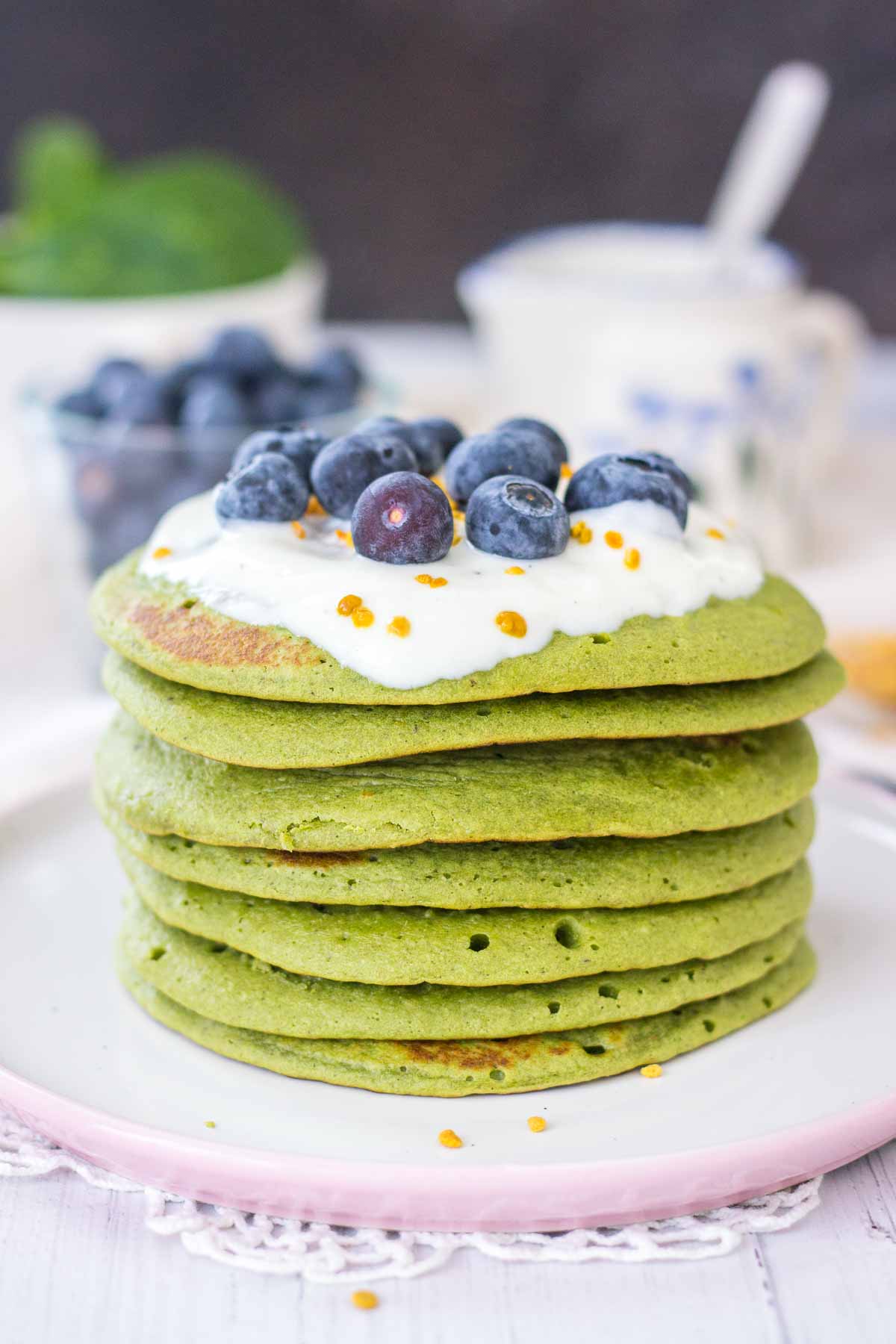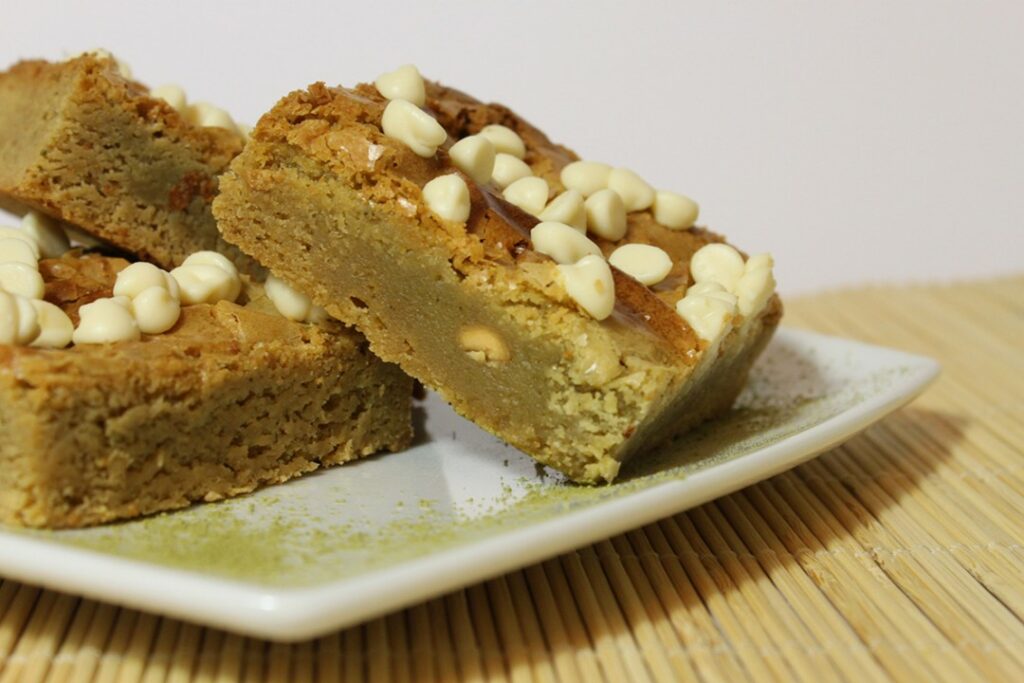Baking with Matcha
Matcha is a delightfully light ingredient that’s seen a large boost in popularity in recent years for a number of reasons. Not only is the flavor a divinely unique version of more classic tea flavors, but also matcha has a number of health benefits that are great for helping you in the day-to-day.
What is matcha?
Matcha is, at the most basic level, a type of tea. All types of tea are grown on the same plant – the tea tree. The thing that makes different varieties slightly different from one another is that they are picked in different ways, and oxidated to different levels during the production process.
Black tea is oxidated the most, leading to a fairly earthy and bitter taste, while white tea is oxidated the least, leading to a light, grassy flavor. Green tea is roughly in the middle of those two extremes – it offers a light, yet full-bodied flavor that is typically boosted by honey or sugar, depending upon personal taste.

Matcha is a specific sub-type of green tea. Tea leaves are grown in the shade, before being picked and processed to an extremely fine grind, meaning that they can essentially be dissolved in hot water to make a cup of tea.
Matcha has that light, full-bodied green tea flavor, though with the addition of a bright grassiness that truly encapsulates the freshness of the tea leaves used in the manufacturing process. It’s a favorite as both a hot drink and an ingredient for baking.
What makes matcha so great?
There are a number of ways that matcha can be seen to have benefits when added to a person’s diet – both anecdotal evidence and clinical trials support the idea that matcha is beneficial. We’ve rounded up a few great examples of the wonderful tea, and we’re going to talk about them a little here.
First of all, we want to mention that matcha has an exceptionally high level of antioxidants in it, which are extracted into cups of tea or bakes during the cooking process. When antioxidants are in a person’s system, they combat free radicals in the bloodstream by stabilizing them. Free radicals can damage cells over time and lead to chronic disease, so anti-oxidants are a vital part of a person’s diet. Matcha, simply, is a great source of them!
Interestingly, matcha tea has also been shown to help people improve attention, memory, and reaction time in their day-to-day lives. This was over the course of around 2 months, with each participant in the study having 2 grams of green tea powder each day – that’s around as much matcha as you’d use in a cup of tea, so the science is quite motivating!
Matcha contains caffeine and l-theanine. Both of these can improve several aspects of brain function. The l-theanine is an impressive component, though, since it helps to manage the absorption of caffeine. It can promote alertness while helping to avoid the drop-off in energy levels that often follows caffeine consumption.
What’s the easiest way to incorporate matcha into a bake?
Incorporating matcha into a bake in your home is a wonderful thing – the flavor matches up with so many others really well, leading to a tasty and delightful bake in no time.
The easiest way to use matcha in a bake is to use it as a basic coloring ingredient.
Matcha is a bright green color that comes through in bakes really easily, while not affecting the taste too much if that’s something you’d like to avoid. A simple way that you could test out matcha’s color-changing properties could be to add it to your cookie dough.
Cookie dough is a really simple recipe that’s got a really chemical reaction at its heart: baking powder + heat = rise. There aren’t any ingredients in matcha that would interfere with that process, so adding a small amount of ground tea to your dough can lead to great results.
We would suggest making enough cookie dough for a batch of twelve cookies and then using half a tablespoon of matcha if you’re unaccustomed to the taste. If you quite like it, though, you can add a full tablespoon to your dough. The more you add, the stronger the taste will be, of course, so find a balance that’s ideal for you, and go from there if you can.
Some great options to combine with matcha in cookies are white chocolate, peach, or ginger. You could even really go for it, and add all three!
Our favorite matcha baking recipes
We’ve got quite a number of matcha recipes that we really enjoy making when we have the chance. They’re often a simple affair that makes use of ingredients from the pantry, which is sometimes just what you need when baking.
 Spinach and matcha pancakes from Natalie’s Health
Spinach and matcha pancakes from Natalie’s Health
This is a wonderfully simple recipe that has equal footing in emptying your fridge and making sure that you get some of your five-a-day. We really like that the final look of the pancakes is a sweet, green appearance. While that’s only natural because of the matcha, it certainly makes the whole experience more fun!
We’d recommend serving these pancakes with some thick Greek yogurt – the acidity of the yogurt interacts well with the earthiness of the pancakes themselves.
Matcha and white chocolate blondies from RussTeas
Blondies are one of everyone’s favorite sweet snacks – stodgy, sweet, thick, and utterly delightful every time! This recipe is a great way to balance the extreme sweetness of white chocolate with the earthiness of matcha, allowing for a recipe that’s both a treat and a balanced look at a wonderful snack.
We’d suggest serving these blondies while they’re still warm from the oven, with a small scoop of ice cream to truly make them decadent.
We hope that throughout the course of this article, you’ve been able to learn about matcha at the same time as us. It’s a fantastic ingredient, and we’re sure that we’d be lost without it. So, whether you’re adding it to cookie dough or sipping at a steaming mug, enjoy your next taste of matcha!



